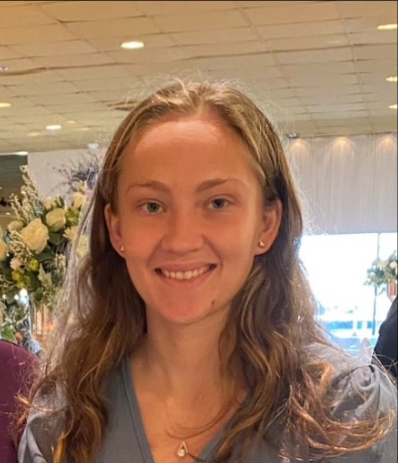Shedding Light on Distant Stars

This summer, Cassie Daniele (BS physics, minor computer science ’24) is participating in a project that seeks to unravel some mysteries of the universe. For 10 weeks, she's working in the Astronomy Department at the University of Michigan as part of the National Science Foundation’s Research Experience for Undergraduates (NSF REU) program. Daniele was selected for this highly competitive program from hundreds of applicants.
“Cassie will learn so much from interacting with and learning from scientists doing state-of-the-art research,” says AU Assistant Professor of Physics Silvina Guidoni, who recommended Daniele for the program. “She has the skills, perseverance, and personality traits to thrive during this intensive program.”

Daniele is working with University of Michigan Professor of Physics John Monnier, who was awarded the 2019 American Astronomical Society’s Joseph Weber Award for Astronomical Instrumentation and was named an American Astronomical Society Legacy Fellow in the Inaugural 2020 Class. Monnier is the creator of the Michigan Infrared Combiner (MIRC), an infrared interferometer that combines the observations of multiple telescopes into one clear image. Daniele is helping to create an archive of data collected by Monnier’s MIRC.
Out of This World Observations
The MIRC is being used at Mount Wilson Observatory in California on a system of telescopes named CHARA (Center for High Angular Resolution Astronomy). CHARA uses six telescopes dispersed over the mountain to create one enormous telescope with incredible resolution. CHARA can observe stars and other celestial objects with exceptional accuracy, even at great distances—the observatory can collect details as small as a nickel seen from a distance of 10,000 miles.
One of CHARA's objectives is to study binary star systems, which consist of two stars gravitationally bound together. This is the research that Daniele is helping her team to organize — stars that have large “errors” in their motion across the sky, possibly meaning that they are a binary or have a companion of some sort. “The goal of the archive project is to make an archive of the data from the MIRC telescope public for all those that want to use the data for research,” Daniele explains. “My research into these stars with larger errors is to hopefully find that these stars are likely binaries. Also, many of these stars are used to calibrate and compare to other stars, and if they do turn out to be binaries, that would mean they are not good for calibrating and should not be used as such.”
“Research Beyond Undergrad”
Daniele, a member of the AU track and cross-country team who received an All-Patriot League academic team last spring, says the REU opportunity has already given her skills and knowledge that will help her succeed in graduate school and beyond.
“At the University of Michigan, I’ve done a good bit of coding in Python and used another program IDL and learned some there. I have also learned a lot about how interferometry works as well as some stellar astrophysics that I did not know before,” she says. “I plan to go on to graduate school and study astrophysics to learn more about the universe we live in. This research program helps me get a feel for what research beyond undergrad may be like. I find it rewarding in the fact that I get to do some research in astrophysics related to what I want to study in graduate school.”
